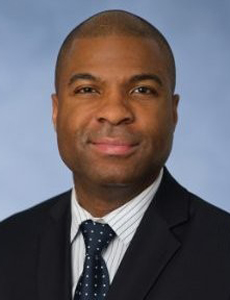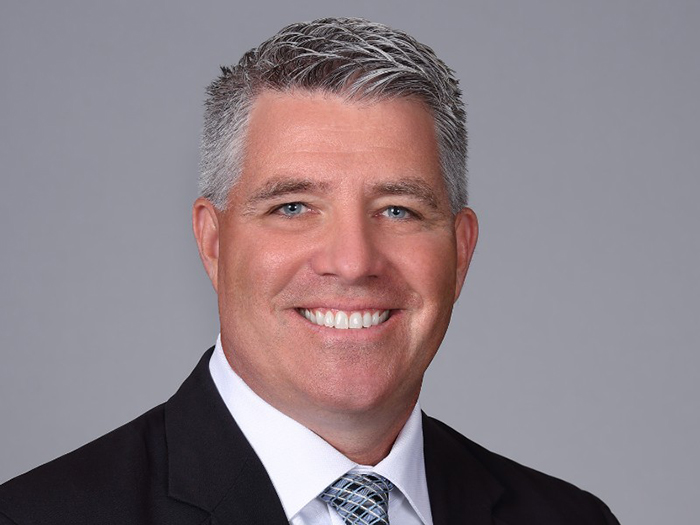AIG, Markel, AXIS Execs and Others Weigh In on the Importance of Diversity in WSIA Panel

The concept of diversity and inclusion (D&I) has been permeating not just the insurance industry but also almost every industry for quite some time.
For at least the last two decades, there has been a significant push toward diversifying the workforce in order to bring in unique talent from all different backgrounds. The goal is to utilize this diverse talent to approach challenges and form solutions from different points of view. Many hold D&I initiatives in high regard, especially as studies show the effectiveness of having such a workforce.
One McKinsey report found that companies with gender, ethnic and racial diversity are at least 15% more likely to experience above-average financial returns. A survey from The Economist found 71% of respondents believe diversity and inclusion promote better talent management, employee satisfaction (64%), collaboration (57%) and corporate reputation (57%).
While the push is not new, awareness toward a more diverse and inclusive workforce has been thrust into the fore in recent weeks.
As Janet Jordan-Foster, EVP at AXIS Insurance, said, “The last four months have laid bare the systemic inequalities that permeate the lives and livelihoods of African Americans each and every day in this country.”
Devastating events — including the death of George Floyd, the killing of Breonna Taylor, the shooting of Jacob Blake and more — have led to a renewed desire for social justice across the country. Industry leaders are taking note. They see that this cry for equality extends beyond acknowledgement.
It must take root in action.
“Our country, our world and our industry are at an inflection point,” Jordan-Foster continued. “People finally acknowledge that the status quo is unacceptable.”
Using this as a backdrop, Foster led a panel of industry change-leaders at the 2020 WSIA Annual Marketplace virtual event held Sept. 13 through Sept. 16.
The panelists reviewed several important D&I trends, insights and more during the WSIA U40-hosted discussion.
Then and Now
The all-Black panel during the WSIA Diversity & Inclusion Panel Session began their discussions around D&I by reflecting on the resources and opportunities made available to people of color within the insurance industry.

Janet Jordan-Foster, EVP, AXIS Insurance
Some on the panel have been in insurance or related fields for over 30 years, while others are relatively new to the space. Yet everyone agreed that the last few years, particularly the last decade, have seen the most growth in D&I initiatives.
Kevin Husbands, territory distribution leader at AIG, said that there were little to no D&I structures or resources available when he entered the business.
“There seemed to be an apathy toward those initiatives with varying levels of importance by senior leadership at the time,” he said.
But that’s now changing.
For example, during his tenure with AIG, Husbands has seen the creation of a diversity and inclusion council within the last eight years. There are specific roles that have been created, he explained, focused solely on D&I strategy and initiative.
AIG is not alone in its creation of a diversity department/group, either. Several other panelists described the creation of D&I roles within their companies as well.
Terrance Meade, a specialty property broker at AmWINS, detailed a D&I council with different backgrounds and cultures that was built primarily on three pillars at his brokerage: (1) career and skill development for the advancement of women and minorities in leadership; (2) a focus on partnering with associations supporting diversity; and (3) ensuring diversity through recruitment, both internally and externally.
Richie Henry, chief information officer, Markel Specialty, at Markel, described several employee groups created within the last 24 to 36 months at his organization — one devoted to Black employees, another to Asian employees, and a third to employees in the LGBTQ+ community.
“It makes a safe environment for employees to share ideas and thoughts and have a dialogue,” he said.
These types of inclusive groups within a company also open the door to so much more opportunity to succeed in D&I. The fear of speaking out is fleeting as minority groups and women find their voice. What makes today’s current D&I strategies so important, Henry added, is that “we’re not just having the discussion, but we’re having the discussion on topics one would have never thought about bringing up in corporate America.”
So, What Qualities Do Leaders Need Today to Bring About D&I Change?
First and foremost, leaders have to be on board with D&I. That is the only way change can stick.
In order to do this, Meade said it helps to think about D&I as less of a “current trend” and more so a shift in how the industry should operate.
“I think of it in simple terms,” he said, using the example of a bus moving along the road from point A to point B. “D&I is not about changing the destination of the bus. D&I is about opening the door to let more diverse people onto the bus to help navigate,” Meade said.
Leaders must be willing to open the bus door and then listen to what their passengers have to say.
“A leader has to have a sense of awareness; empathy; the ability and willingness to listen; along with sensitivity,” said Oveta Mitchell, vice president, AXIS Insurance. “There should be training. Not one-day training but ongoing training on understanding the underlying causes of systemic racism and the effects it has on people of color.”
That training should not only produce effective leadership but also increase leaderships’ role and understanding of diversity and inclusion within their organization.
“Whether you’re leading a team in an office or an organization, your team has to know you have their best interest in mind when making decisions,” Meade said. Getting a full picture of what D&I means for the organization is just the start.
Bringing on Chief Diversity Officers
Once leadership is dedicated to advancing D&I efforts, the panelists agreed that having specific organizational roles dedicated to implementing D&I initiatives is key.
For some, that can come in the form of partnership with outside organizations like the National African American Insurance Association. For others, that means participating in group discussions surrounding their company’s efforts so far.
Many are implementing the role of chief diversity officer.
A chief diversity officer (CDO) acts as an organization’s executive level diversity and inclusion strategist. Their role is designed to help set up D&I programs and carry through on initiatives.
“Diversity and inclusion becomes the [CDO’s] focus. Councils and committees are a great place to start,” Henry said, but employees in those additional roles have their full-time job responsibilities to return to. “Whereas, this role has one focus.”
But, added Mitchell, the role is only as important as the company makes it. If leadership buy-in is missing or if leadership truly isn’t behind diversity efforts, the CDO may not be able to make a difference.
As panelist Kevin Davis, senior executive VP at Worldwide Facilities, LLC said, the CDO role is “not just a checked box” on the D&I journey; it’s a crucial element to implementing change.
The Benefits Reap Rewards
One final piece of the puzzle lies in showing why D&I efforts are not just the right thing to do, but also beneficial to the organization and its shareholders.
“I believe that this has to be a top down, bottom up, inside out approach,” Henry said.

Terrance Meade, specialty property broker, AmWINS
Top down stems from the executive suite, he explained. Bottom up comes from a grassroots standpoint — “The associates need to demand to know the numbers. The associates need to demand what they can do to make things different. The associates need to demand that their managers get involved,” Henry said.
From the middle out, he said a steering committee is a key place to put policies and strategies in place that will effect change within the entire organization.
All this has to be centered around the organization’s goals. This is how a company will meaure the rewards behind their D&I efforts. The goals can be a number of different things, including how D&I will increase profit, increase market share, attract diverse group of customers, so long as these goals are measurable.
In the end, the goals must “show that [D&I] is important to us, that we’re serious about this, that this is how we’re going to get our company to grow and [show] how everyone is going to benefit from it,” Henry said.
The Value in Working in Collaboration with Others
The biggest takeaway from the WSIA panelists’ discussion was that D&I does not start and end within one organization alone; effective action occurs when companies collaborate on what’s working.
Meade said, “Collaboration is important, because it gives organizations opportunity to learn what they’ve done correctly and what they haven’t done correctly.”
“Collaborating with different individuals is going to make decision making that much more easier and effective,” Davis added.
“Collaborating with others on diversity and inclusion is very important, because effective collaboration involves diversity of thought, diversity of views, and diversity of ideas, and in our industry we must learn from companies that are already engaged in D&I activities and build upon their best practices,” added Carlton Maner, CEO, U.S. division, AXIS Capital, in the virtual event’s introduction. &










